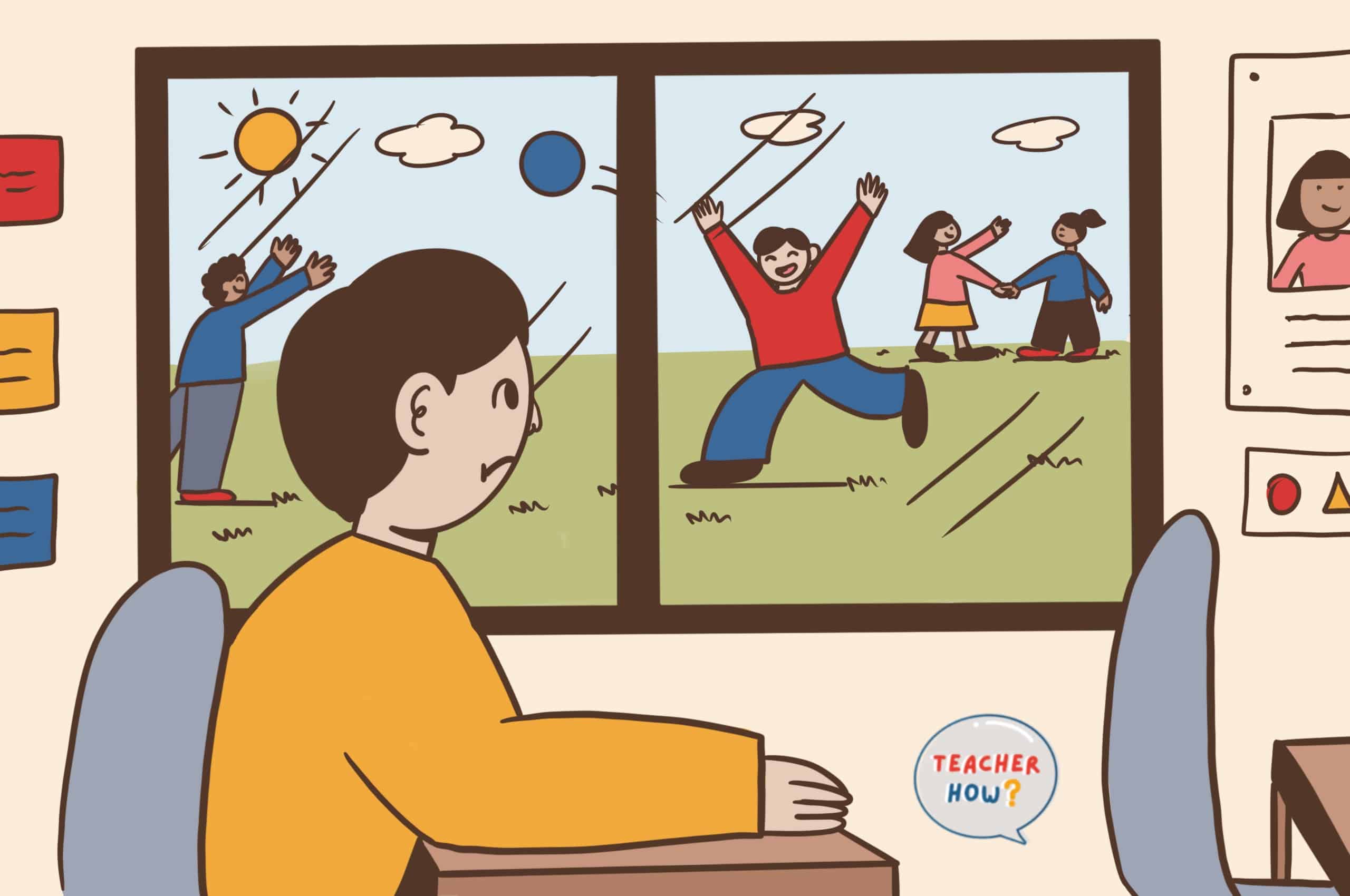More than ever, kids need physical activity and breaks in their day. Regular recess time improves concentration, social skills, and physical activity. Punishing students for a particular reason by taking away recess is a common school practice, but several other options work better.
Here are 10 alternatives to taking away recess as punishment:
- Reinforce good behavior.
- Remove options at recess.
- Delegate responsibilities.
- Communication and resolution before or after recess.
- Delay the start of recess.
- Have them participate in community service.
- Establish separate spaces.
- Implement a “cool down” area with independent activity.
- Encourage adult interaction on the playground.
- Revoke screen time.
These options still allow children to have their break time outside, burn off energy, and engage in positive interactions to improve behavior. This article will list the best alternatives to taking away recess as punishment and outline how you can implement each one.
1. Reinforce Good Behavior
Children respond best to positive reinforcement, as it builds their confidence and encourages them to repeat the behavior. A reward such as stickers, a piece of candy, special responsibilities, or extra recess time instills in your student that this behavior will benefit them.
Children are new to the world and haven’t learned to manage their emotions yet, which leads to tantrums, hurt feelings, and acting out.
Any forgiveness, patience, validation, and redirection they receive from you, help students navigate these feelings and make better choices. Praise for a good act or behavior positively encourages your students to see situations in a better light.
As mentioned in previous articles, I use Class Dojo to acknowledge students who are meeting classroom expectations. The concept is simple; students receive dojo points at the teacher’s discretion, and those who have accumulated a certain number of dojo points by the end of the week will be rewarded with ‘golden time’ or ‘free time’.
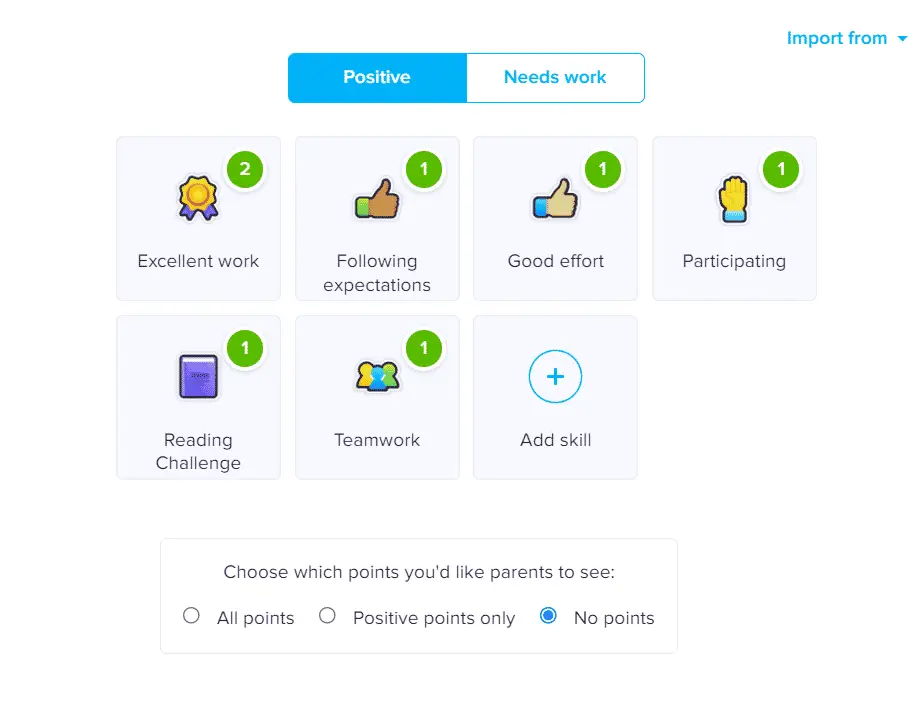
2. Remove Options at Recess
Removing an option or particular game at recess still encourages a child to reflect on their conduct without having them lose their recess time.
Playground supervisors will notice that there’s often one specific game or area on the playground that causes conflict that students can’t resolve right away.
For example, during a soccer game, you may notice a child not playing fairly. After a reminder and warning, if the student still cannot play considerately and is spoiling the game for others, ask that child to engage in another activity away from the current area.
Taking the child out of the game doesn’t mean they are permanently excluded from playing it again. They just need time to reflect on their behavior and be mindful of making better choices in the future.
You must explain to the student why they’re taken out of the game and tell them that they can rejoin when they’re ready to play appropriately. Suggest alternative games and activities to the student so they can continue to be active and have time outside the classroom.
Of course, behavior issues are not just limited to the playground. Therefore, this strategy can be implemented in class also with a similar effect.
3. Delegate Responsibilities
Students thrive with a sense of purpose and when they are made to feel important. Assigning a child with a particular job or responsibility can ensure that you achieve this.
Once a child experiences this feeling of significance, they will work hard to fulfill their duty and show that they can be trusted with further responsibilities.
There are many examples of jobs that can be delegated to students. For instance, assign the task of collecting and distributing books to a student who may not be the best at caring for equipment. This way, the student can consciously practice taking better care of something they have been allocated. For an added incentive, make a deal with the student that if they do a great job with the books, they will be ‘promoted’ to handling more valuable equipment, like laptops.
Why not make this point come to life with a ‘classroom job chart’ display? Check out the article below for ideas on how to get the best out of delegating responsibility to students.
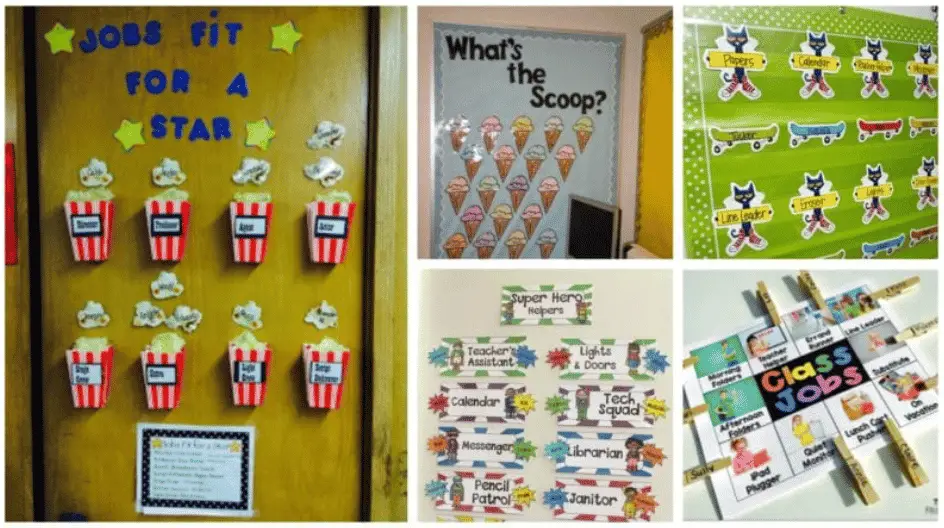
4. Communication and Resolution Before or After Recess
Kids will have arguments and conflicts in the classroom and on the playground, and you want to address these problems promptly, but (ideally) not during recess.
Arrange a time before recess where you can pull the student or students aside to discuss the issue. It is essential that they have a say in the discussion and allow them to come up with a resolution to the problem, such as:
- “I won’t play with so-and-so today if we can’t get along.”
- “I’ll apologize to so-and-so for calling them a name.”
After recess, check in with the student or students to ensure that they followed through with what was discussed. If the issue persists or worsens, you may need to implement further action to emphasize that such behavior will not be tolerated.
These brief meetings will ensure that students do not feel resentful for losing their recess, but more importantly, they will have greater confidence in you for listening and trying to solve their problems.
5. Delay the Start of Recess
Kids love to be the first to go down the slide, choose their favorite ball for a game, or pick teams for group sports. Selecting an arbitrary or insignificant amount of time that the student must wait or do another activity feels like an eternity.
Children perceive time differently than adults, which is why you hear so many adults say, “the years seem to go faster as I get older.”
For a child, waiting 30-60 seconds to join their friends or do an activity will feel like forever.

You aren’t taking away their entire free time when you implement this tactic. However, the child will now see that if they hadn’t received the consequence, they could’ve potentially been first in line for the slide and not have to wait behind several other students.
Moreover, I often give the student a chance to earn back the time lost with the suggestion that if they are making better choices in terms of behavior, they can redeem the extra recess time the following week. Be careful with this last point because if overused, it diminishes the purpose of student reflection.
6. Have Them Participate in Community Service
Kids need stimulation. Outside recess is crucial because it allows kids to be active and get plenty of fresh air and sunshine – weather permitting. Keeping a student indoors or even having them “sit on the wall” doesn’t allow them to get their wiggles out, which ultimately impairs concentration and the ability to pay attention in class.
Instead, assigning a student to take part in community service work during recess allows them to reflect on their actions while still moving around. Picking up trash, scrubbing graffiti, or helping to decorate the school premises for 5 minutes keeps their minds and hands busy. What’s more, it instills a sense of pride in helping to improve their school.
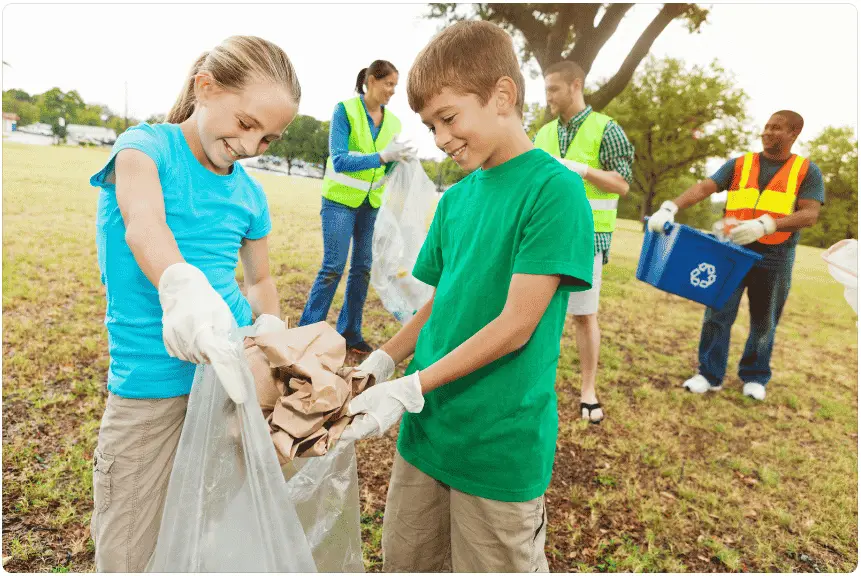
Turn a negative consequence into a positive experience for the student. Say things like:
- “See how beautiful you helped make our school?”
- “You did a great job taking out all the trash for our janitors.”
Make them see that their actions are making a difference.
Your student may not like community service work because they’d rather be playing with their friends. But they don’t have to feel that their mistake defines who they are as a person and that a negative consequence can become a positive experience.
7. Establish Separate Spaces
Children that don’t play well together or have conflict need to be separated until they can agree to play appropriately again.
Designating a dividing line on the playground can prevent further arguments or unwanted playground behavior. Child 1 can play in a designated area (A), and Child 2 can play in the other assigned area (B).
If implementing this strategy, my recommendation would be to alternate days so that each child has the opportunity to use different areas of the playground throughout the week. Once the students decide they can be around each other without conflict, you can remove the restrictions and open the playground for everyone to enjoy.
8. Implement a “Cool Down” Area With Independent Activity
One child cuts in line for the swing or takes someone else’s markers in class without asking. An altercation breaks out, and you need to intervene before the conflict escalates.
As an adult, hopefully, you’ve learned to manage your emotions and anger by walking away from a situation and returning when you have a cool head. Children haven’t learned these methods yet and require guidance.
Just as you may have a “time out” zone in your classroom, introduce a “cool down” area ready for students that need a break. Set a timer and designate an area with independent activities like jump ropes and sidewalk chalk. That way, the student does not see this action as a punishment but rather as a way of supporting them in managing their emotions.
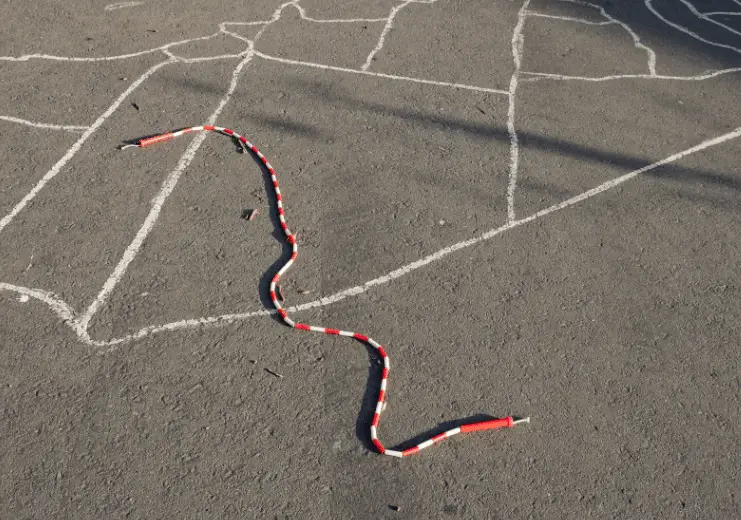
Once the student has collected themselves, you can have a conversation about acceptable behavior and conflict resolution. When you and the student find a solution, you can reintroduce them to the original activity or game.
9. Encourage Adult Interaction on the Playground
Most schools will have a duty roster requiring staff to undertake playground supervision for the safety of the children. If you are fortunate, your school will have designated recess monitors. But in most cases, teachers will be involved with playground responsibilities.
Active adult participation during recess time can be highly effective in the prevention and intervention of behavior issues.
Children want to know the boundaries and will constantly push against them. Your presence on the playground can be very powerful in modeling the desired behavior as a way of visually communicating the expectation.
And why not use this time to consciously interact with students? Being out in the playground is an excellent opportunity for adults to effortlessly connect and engage with children away from the academic pressures of the classroom. These interactions should already exist before any instances of misconduct by a student. But if students need a reminder of the expectations, then a talk with an adult out on the playground would be a better alternative to keeping the student inside during recess.

Teachers and recess monitors should undergo training to recognize, mitigate, and resolve solutions on the playground with several kids. A teacher will already be using these techniques in the classroom, but if you’re a recess monitor or support staff, you may need additional training to feel confident in your role.
Recess monitors can “practice” recess with children having trouble with social interactions or engaging in group play. These practices help teach sharing (“Pass the ball to me, and I’ll pass it back”) and patience (“You take your turn, and then I’ll take mine”).
Your students can take these lessons back to the group more confidently and share what they’ve learned.
10. Revoke Screen Time
As technology advances, so does the way kids learn and entertain themselves.
Screens such as laptops or tablets can be stimulating learning tools, but they aren’t the only way children can learn.
The Center for Disease Control and Prevention states that children’s interaction with screens can be the reason for behavior and attention problems. That isn’t to say screens are inherently wrong, but the Mayo Clinic Hospital states that parents should limit screen time to two hours per day.
As a teacher, you can’t control your student’s screen time at home. However, screen time in your classroom is a privilege and can be monitored and used as favorable reinforcement or a negative consequence. Be sure to read our article on how to encourage students to use technology responsibly in class.
Taking away the privilege of tablets or computer time as a consequence is, on the whole, better than taking away a student’s recess. Screens can encourage a sedentary lifestyle, whereas recess encourages more activity and socialization.
Recess Can Help With Disruptive Behavior
Recess is integral to child development as kids who have regular breaks during the day can focus and perform better in class. Breaks during the day do more than get the wiggles out.
Recess shows a decrease in disruptive and inappropriate behavior.
In 2010, former First Lady Michelle Obama joined the NFL and American Heart Association in their endeavor to get kids more active. The NFL Play 60 Challenge encourages children and families to reach a minimum of 60 minutes of moderate-to-vigorous activity each day.
Recess allows students to meet this requirement during the day to promote a healthy lifestyle.
The CDC endorses the national recommendation by stating that children six years old and older should be involved in physical activity for 60 minutes each day. The CDC adds that children should focus on activities that build muscle, endurance, and strength three times per week for strong bones, a healthy heart, and an active brain.
If students are unable to go out for recess due to factors out of your control, e.g., unsuitable weather conditions, they can still get their daily dose of exercise indoors. I love to use the website GoNoodle to achieve this. With plenty of free dance, meditation, and exercise routines available online, GoNoodle is perfect for students to unwind and release some pent-up energy.

Positive Consequences vs. Negative Consequences
Consequences are an important aspect of society. They reinforce the values needed for a safe and pleasant environment. Additionally, they are necessary for instilling a sense of responsibility and accountability in individuals.
Children need this understanding of consequences to become better members of society in the future. And for children, these lessons should take place at home and at school.
Positive Consequences
Positive consequences encourage the behavior.
Praising a child for doing a job well boosts their confidence and makes them want to repeat the behavior. Positive consequences can be physical rewards like toys or treats or permission to do certain activities.
Teachers can implement these positive consequences in class and on the playground.
When you recognize a student for sharing or incorporating a verbal appreciation or a particular task, such as saying, “You can be a line leader because you stood very sensibly in line today,” your student will want to continue to exhibit these behaviors.
Negative Consequences
The connotation of “negative consequences” is that it creates adverse outcomes. That thought isn’t necessarily the case, as a negative consequence discourages a specific behavior.
The CDC offers suggestions for negative consequences, including ignoring a minor infraction, redirection to a different activity, delaying or losing privileges, and time-outs. These consequences escalate in response and can vary in order depending on the frequency and severity of the behavior.
The CDC also discusses “natural consequences,” which are self-taught. The example given describes when a child plays too rough with a toy, which causes it to break. On the playground, this could include throwing a ball over a fence and not being able to retrieve it or upsetting a friend that doesn’t want to play with them anymore.
From a teacher’s perspective, we feel better about acknowledging the correct behavior rather than showing our dissatisfaction with what a child has done wrong.
The effectiveness of a consequence will vary on a case-by-case and student-by-student basis. This is why teachers need to reflect on the approaches they take. And for this to be possible, school leaders need to provide the time and support for teachers to think about how they manage students’ behavior.
Children Think They Need Recess Too
Simon Link, a 3rd grader at Amana Academy, gave a Ted Talk on why kids should have an hour-long recess. Simon took on the task of answering the question, “what do you want the future to look like?” Here, Simon brilliantly explains to a group of adults that kids are more productive, learn better social skills and conflict resolution, and improve physical and mental fitness.
Simon also provides scientific research to prove his point that kids need recess in the following YouTube video:
He discusses the benefit of physical activity and the positive impact recess has after the bell rings. Such benefits include students being less likely to fidget and cause distractions, and more likely to improve academically.
With recess being so important for children, teachers should avoid taking it away as a punishment as much as possible.
Instead, the options listed above will provide better conflict resolution and alternatives to losing out on their break.
States That Mandate Recess
Recess isn’t just a good idea to implement and maintain. In some states, recess is the law.
States that have written into their statutes that require children to receive 20 minutes of recess activity per school day include:
- Missouri
- Florida
- New Jersey
- Rhode Island
States that mandate 20-30 minutes of physical activity during the school day include:
- Iowa
- North Carolina
- South Carolina
- Louisiana
- Texas
- Virginia
These states give individual schools and districts the authority on how that time is blocked. Arizona Senate Bill 1083 states that schools are required to provide two recess periods per school day.
In 2019, Connecticut mom and CT representative Lucy Dathan proposed House Bill 7250, increasing recess time from 20 minutes to 50 minutes per school day. Lucy cited sources in her proposal that stated recess supports physical activity and better academic performance.
The measure passed with zero opposition.
Individual districts and schools have their own rules regarding recess, but as of this article, the states listed above are the only states with mandatory requirements.
Sources
- Center for Disease Control and Prevention: How Much Physical Activity Do Children Need?
- Center For Disease Control and Prevention: Recess
- SHAPE America: Top 10 Reasons for Recess
- Learn Well: PlayWell: Alternatives to Withholding Recess as a Punishment
- Teacher.org: 9 Ideas You Can Use Without Taking Away Recess
- ChangeKidsLives.org: When Should We Take Away Student Recess?
- The Inspired Treehouse: Positive Discipline: 10 Alternatives to Taking Away Recess
- Mayo Clinic Health System: Children and screen time: How much is too much?
- Center for Disease Control and Prevention: Why are Discipline and Consequences Important
- Edutopia: Time to Play: More State Laws Require Recess
- Legiscan: CT HB2750
- Arizona Department of Education: Recess
- ClassDojo
- We Are Teachers: 38 Ideas for Flexible, Fun Classroom Job Charts
- GoNoodle

